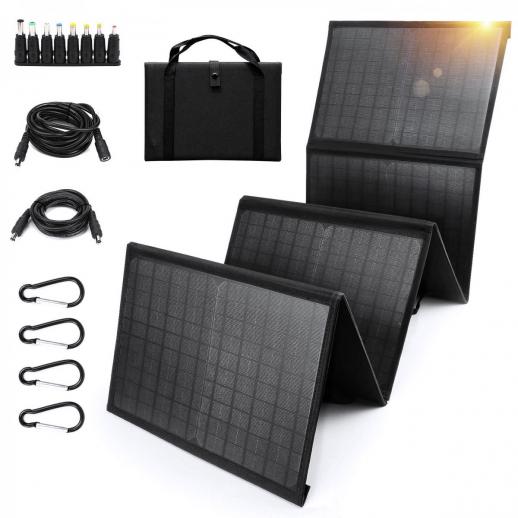How Many Solar Panels To Run A House?
As the world continues to shift towards renewable energy sources, more homeowners are considering solar power as a viable option for their energy needs. One of the most common questions that arise in this context is: "How many solar panels do I need to run my house?" This question is crucial for anyone looking to make the transition to solar energy, as it directly impacts the cost, feasibility, and efficiency of the solar power system. In this article, we will delve into the various factors that determine the number of solar panels required to power a home, providing a comprehensive guide to help you make an informed decision.

Understanding Your Energy Consumption
The first step in determining how many solar panels you need is to understand your household's energy consumption. This is typically measured in kilowatt-hours (kWh). You can find this information on your electricity bill, which usually provides a monthly or annual summary of your energy usage. On average, a U.S. household consumes about 877 kWh per month, but this can vary significantly based on factors such as the size of the home, the number of occupants, and the types of appliances used.
Calculating Your Solar Power Needs
Once you have a clear understanding of your energy consumption, the next step is to calculate how much solar power you need to generate to meet that demand. This involves considering the following factors:
1. Peak Sunlight Hours: The amount of sunlight your location receives directly impacts the efficiency of your solar panels. Peak sunlight hours refer to the time during which the sunlight is strong enough to generate a significant amount of electricity. For example, a location that receives 5 peak sunlight hours per day will generate more solar power than a location that receives only 3 peak sunlight hours.
2. Solar Panel Efficiency: Not all solar panels are created equal. The efficiency of a solar panel refers to the percentage of sunlight it can convert into usable electricity. Most residential solar panels have an efficiency rate between 15% and 20%. Higher efficiency panels will generate more electricity in a smaller space, but they also tend to be more expensive.
3. System Losses: No solar power system is 100% efficient. Various factors such as shading, dust, and temperature can reduce the overall efficiency of your system. It's generally safe to assume a system loss of about 15% to 20%.
Example Calculation
Let's walk through an example to illustrate how these factors come together to determine the number of solar panels needed.
1. Determine Energy Consumption: Suppose your household consumes 900 kWh per month.
2. Convert to Daily Consumption: 900 kWh per month / 30 days = 30 kWh per day.
3. Adjust for System Losses: Assuming a 20% system loss, you need to generate 30 kWh / 0.8 = 37.5 kWh per day.
4. Calculate Based on Peak Sunlight Hours: If your location receives 5 peak sunlight hours per day, you need a system that can generate 37.5 kWh / 5 hours = 7.5 kW.
5. Determine Number of Panels: If you are using 300-watt panels (0.3 kW), you would need 7.5 kW / 0.3 kW per panel = 25 panels.
Factors Influencing the Number of Panels
While the above example provides a basic framework, several other factors can influence the number of solar panels you need:
1. Roof Space: The amount of available roof space can limit the number of panels you can install. If you have limited space, you may need to opt for higher efficiency panels to meet your energy needs.
2. Orientation and Tilt: The orientation (direction) and tilt (angle) of your solar panels can significantly impact their efficiency. Ideally, panels should face south (in the Northern Hemisphere) and be tilted at an angle equal to your latitude to maximize sunlight exposure.
3. Energy Storage: If you plan to use battery storage to store excess energy for use during cloudy days or at night, you may need additional panels to ensure you generate enough power to charge the batteries.
4. Future Energy Needs: Consider any future changes that might increase your energy consumption, such as adding new appliances, expanding your home, or purchasing an electric vehicle. It's often more cost-effective to install a slightly larger system upfront than to add more panels later.
Financial Considerations
The cost of a solar power system is a significant factor for most homeowners. While the initial investment can be substantial, it's essential to consider the long-term savings on your electricity bills and potential incentives or rebates available in your area. Many regions offer tax credits, rebates, or other incentives to encourage the adoption of solar energy, which can significantly reduce the overall cost of your system.
Determining the number of solar panels needed to run a house involves a careful analysis of your energy consumption, local sunlight conditions, and the efficiency of the solar panels you choose. By understanding these factors and performing a detailed calculation, you can design a solar power system that meets your energy needs and provides long-term financial and environmental benefits.
As the demand for renewable energy continues to grow, advancements in solar technology are making it more accessible and affordable for homeowners. By taking the time to understand your specific requirements and exploring the available options, you can make an informed decision that will help you transition to a more sustainable and cost-effective energy solution.
